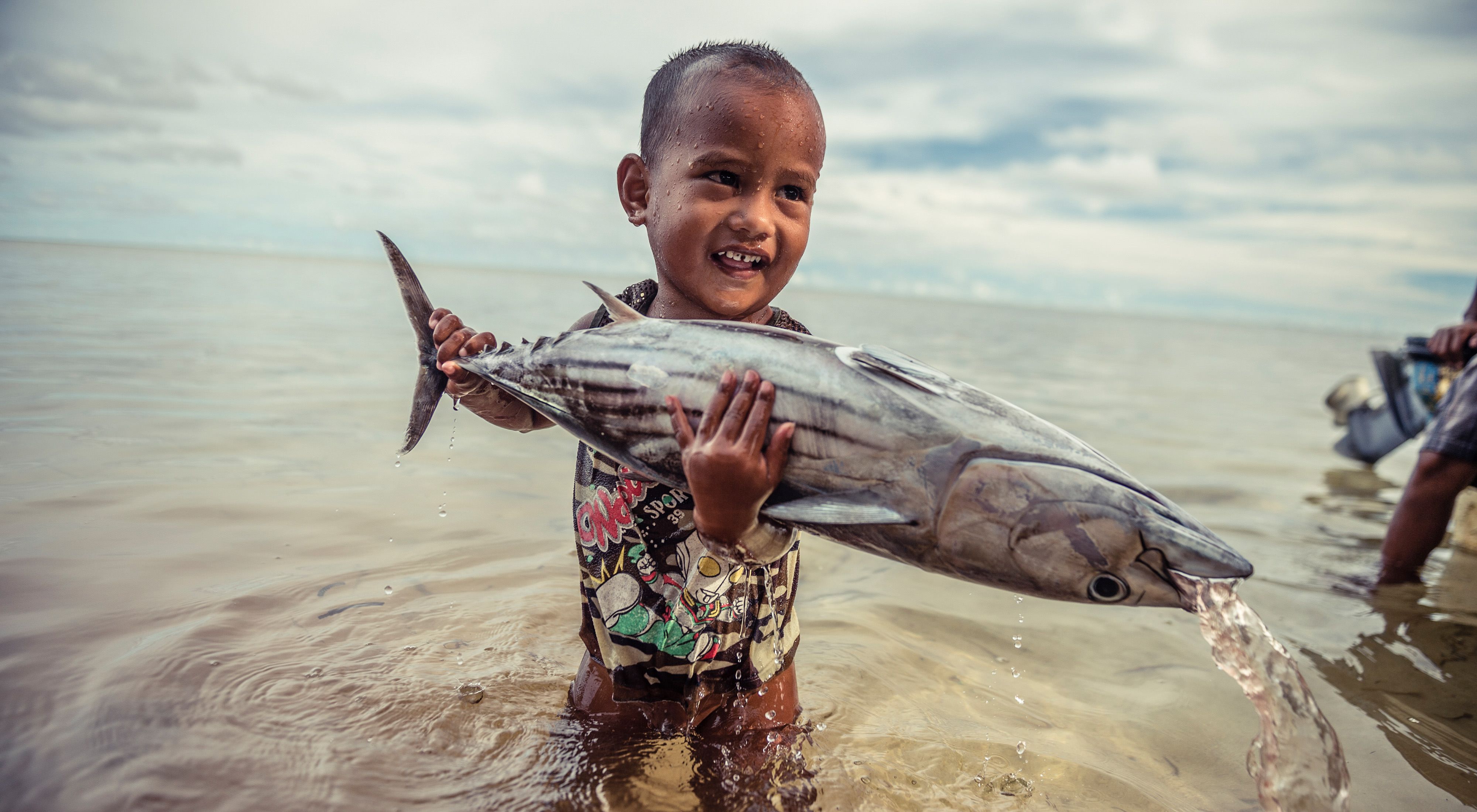Meet the Tuna
Bluefin tuna is one of the ocean’s most prized fish, an icon of both modern and classic civilizations and a key predator in the ocean’s delicate food chain. Bluefin tuna are fast. And they are world travelers — capable of spanning the globe in a calendar year. They can weigh up to 1,500 pounds.
There are smaller types of tuna too, making seven species in total. Tuna can be found all over the globe since they all migrate great distances. For example, the northwestern population of bluefin tuna relies on the Gulf of Mexico to spawn every spring, thousands of miles away. Tuna are carnivorous fish that can live in the wild for up to 15 years—if they aren’t caught by fishermen.



Protecting the Tuna
For millions of people around the world, tuna fish is a regular part of their diet and important protein source. But, the rapid growth of the human population is putting many tuna fisheries at risk.
39 percent of the world's tuna stocks were classified as overfished in 2014.
The waters of the Western and Central Pacific produce 60 percent of the world’s tuna—a haul of nearly 3 million metric tons worth almost $7 billion each year. Ecological degradation threatens to disrupt the global seafood supply and crush Pacific Island economies that rely heavily on tuna revenues. Keenly aware of what’s at stake, regional governments are working toward better management and monitoring solutions in this longline tuna fishery. But they’re missing some critical information needed to roll out more sustainable fishing practices, such as the type and number of species caught.
The Nature Conservancy (TNC) is working with local partners to help close the data gap by funding scientific research on longline fishing practices. In tandem, TNC is rolling out electronic monitoring technology in the tuna fishery to improve oversight. Using motion sensors and GPS systems with cameras, government and industry players can see what species are being brought on board. These investments not only provide a lifeline to an ailing ecosystem but also help regional leaders create more informed—and more sustainable—fishery policies. This multi-faceted approach will help stabilize regional ecosystems, protect the world’s tuna supply and preserve local cultural traditions.
We all want tuna and seafood in the future, and you can help make that happen by donating today.
